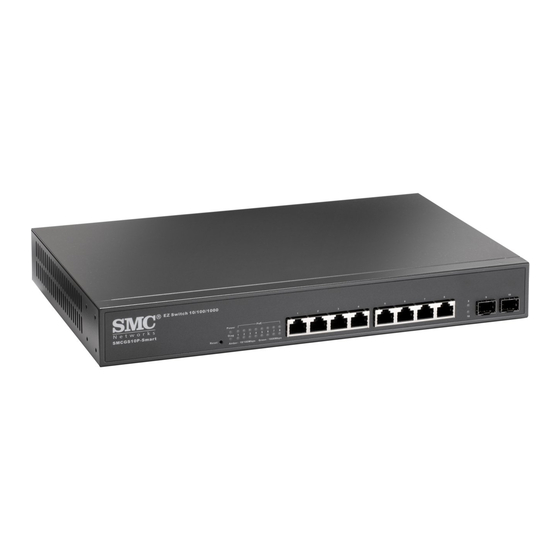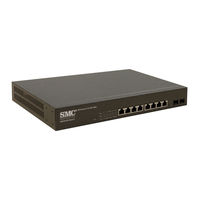
User Manuals: SMC Networks SMCGS10P-Smart Switch
Manuals and User Guides for SMC Networks SMCGS10P-Smart Switch. We have 3 SMC Networks SMCGS10P-Smart Switch manuals available for free PDF download: Management Manual, Installation Manual
SMC Networks SMCGS10P-Smart Management Manual (288 pages)
Web Smart 10-Port GE PoE Switch
Brand: SMC Networks
|
Category: Switch
|
Size: 3 MB
Table of Contents
Advertisement
SMC Networks SMCGS10P-Smart Installation Manual (68 pages)
Web Smart 10-Port Gigabit Ethernet PoE Switch
Brand: SMC Networks
|
Category: Network Router
|
Size: 2 MB
Table of Contents
SMC Networks SMCGS10P-Smart Installation Manual (59 pages)
EZ Switch 10/100/1000 Web Smart 10-Port Gigabit Ethernet PoE Switch
Brand: SMC Networks
|
Category: Network Router
|
Size: 2 MB
Table of Contents
Advertisement
Advertisement
Related Products
- SMC Networks EZ Switch SMCGS16
- SMC Networks EZ Switch SMCGS16-Smart
- SMC Networks SMCGS10C-Smart
- SMC Networks EZ Switch SMCGS24
- SMC Networks SMC EZ Switch 10/100/1000 SMCGS8P-Smart
- SMC Networks SMCGS501 - FICHE TECHNIQUE
- SMC Networks SMCGS801 - FICHE TECHNIQUE
- SMC Networks EZ Switch SMCGS24-Smart
- SMC Networks EZSwitch SMCGS24C-Smart
- SMC Networks SMCGS805


